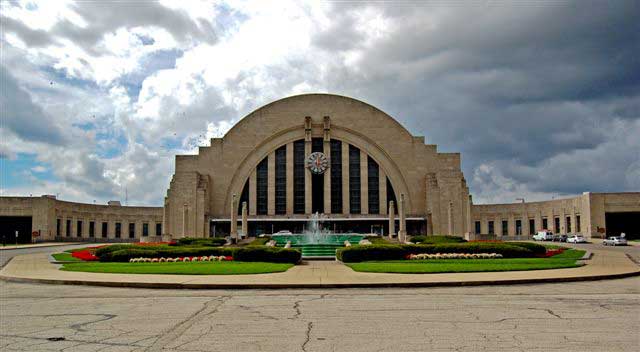Grand train stations, often centrally located and built of fine materials richly embellished, now offer unique opportunities for renewal in cities and towns where prime real estate is scarce.
Many train stations were built at a time when rail travel reigned supreme. Facilities needed to be able to accommodate several hundred or thousand passengers, which was especially true for “union stations” served by multiple railroads. Stations served as the anchors around which towns were formed. Depot size, layout and construction materials were determined by the population of the town and projected ridership; detailing could be adjusted based on available materials and regional preferences.
Many cities have taken the opportunity to transform their stations into transportation centers enhanced by cultural and retail uses.
But today, with competing travel options, some communities simply no longer need the large spaces included in their train stations. To let these buildings deteriorate or sit empty, though, would be a waste of civic resources and a disservice to our country’s rich transportation history. That’s why many cities have taken advantage of this prime real estate to transform their stations into transportation centers enhanced by cultural and retail uses.
Cincinnati Union Terminal, completed in 1933, was built to merge the city’s then seven railroads which operated from five separate train stations. As many as 34,000 passengers passed through the station daily, particularly during World War II when soldiers crowded the waiting room. But by the 1950s, cars and airplanes competed with the railroads for passengers, and large train stations such as Union Terminal closed their doors in favor of smaller facilities that were less costly to maintain.
Nearly two decades passed before the station reopened—after extensive restoration by the county, city and state—this time as the Cincinnati Museum Center.
The station’s attractions include:
- The Cincinnati Historical Society Library
- The Cincinnati History Museum
- The Duke Energy Children’s Museum
- The Museum of Natural History and Science
- The Robert D. Lindner Family OMNIMAX® Theater
- Shops, restaurants, rental spaces
- An Amtrak ticket office and waiting room
Union Terminal’s reinvention successfully created a destination for visitors on the western edge of downtown while keeping a city’s valuable memories alive.



 Amtrak established the Great American Stations Project in 2006 to educate communities on the benefits of redeveloping train stations, offer tools to community leaders to preserve their stations, and provide the appropriate Amtrak resources.
Amtrak established the Great American Stations Project in 2006 to educate communities on the benefits of redeveloping train stations, offer tools to community leaders to preserve their stations, and provide the appropriate Amtrak resources. For more than 50 years, Amtrak has connected America and modernized train travel. Offering a safe, environmentally efficient way to reach more than 500 destinations across 46 states and parts of Canada, Amtrak provides travelers with an experience that sets a new standard. Book travel, check train status, access your eTicket and more through the
For more than 50 years, Amtrak has connected America and modernized train travel. Offering a safe, environmentally efficient way to reach more than 500 destinations across 46 states and parts of Canada, Amtrak provides travelers with an experience that sets a new standard. Book travel, check train status, access your eTicket and more through the